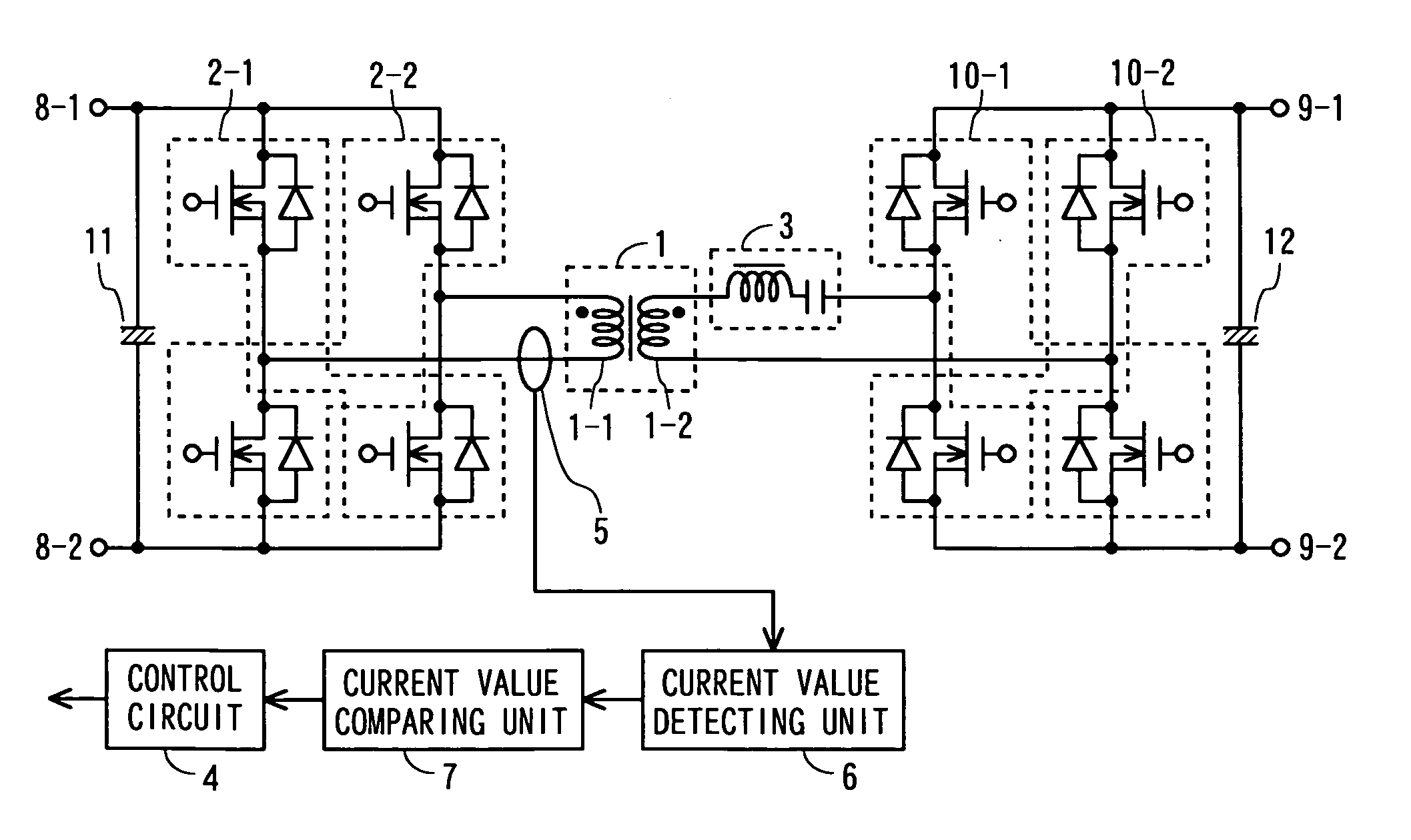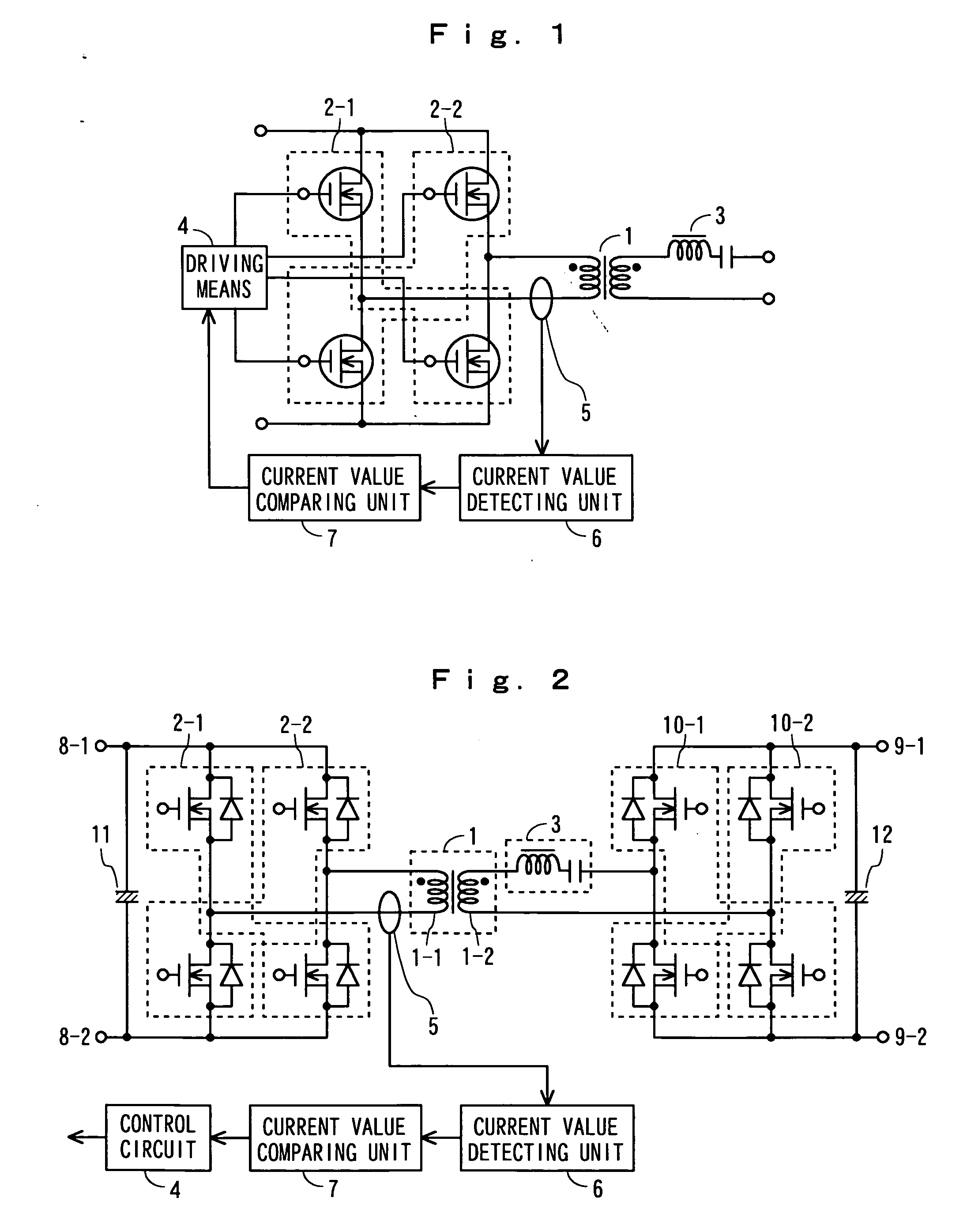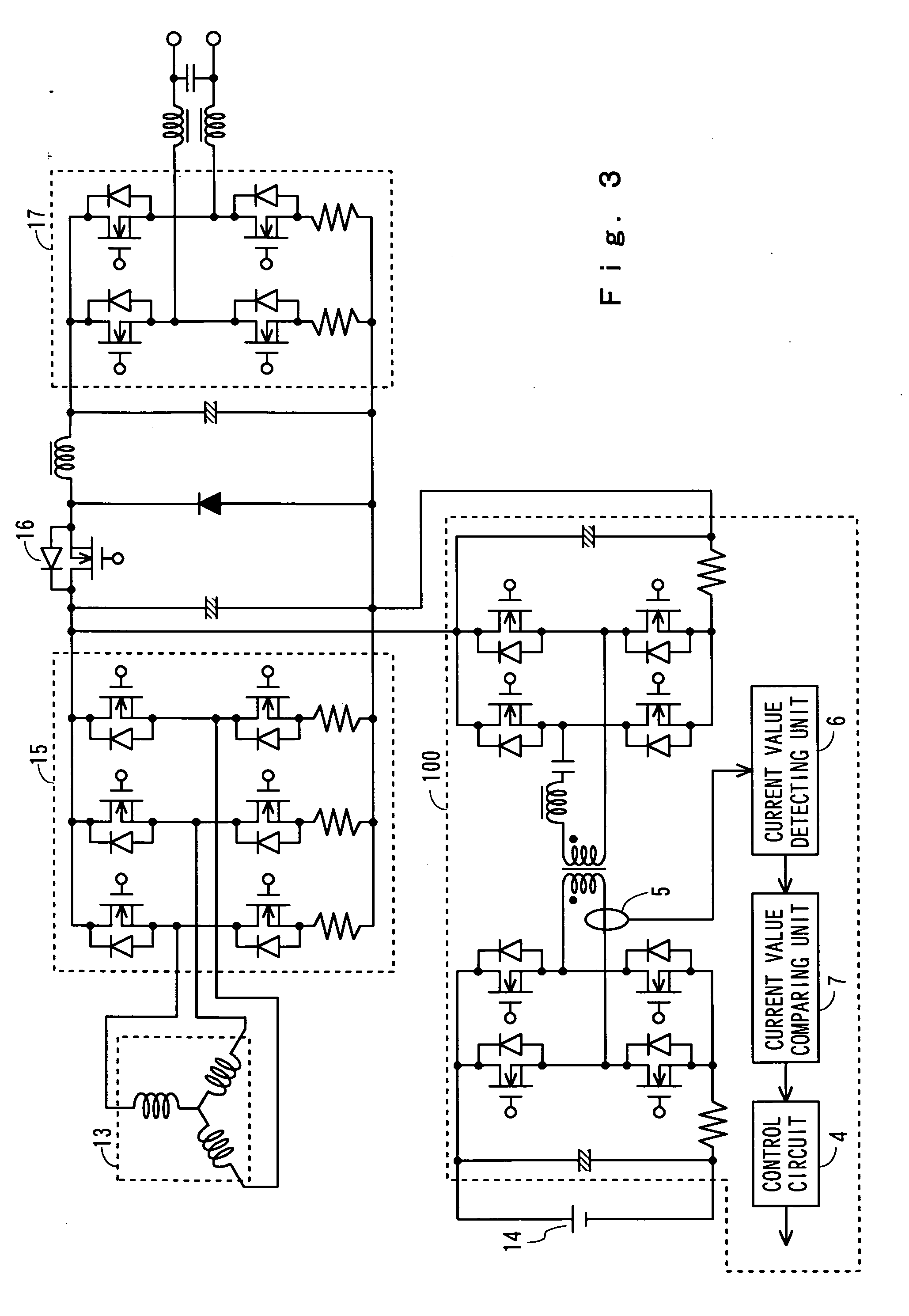Dc-dc converter
a technology of dc converter and converter, applied in the direction of electric variable regulation, process and machine control, instruments, etc., can solve the problems of reducing conversion efficiency, achieve the effect of preventing the occurrence of dc offset, enhancing conversion efficiency, and eliminating the fear of saturation in the voltage converting transformer
- Summary
- Abstract
- Description
- Claims
- Application Information
AI Technical Summary
Benefits of technology
Problems solved by technology
Method used
Image
Examples
Embodiment Construction
[0029] The present invention will be described below with reference to drawings. FIG. 1 is a circuit diagram showing a principle of a DC-DC converter according to the present invention. In the following, the same components as those of FIG. 4 or similar components are indicated by the same reference numerals. FIG. 1 is different from FIG. 4 in that resonant current detecting means is provided which detects a resonant current due to operations of a resonant circuit 3 so that a value of a resonant current detected by this means may be fed back to driving means 4. The resonant current detecting means is composed of a resonant current detecting current transformer 5 arranged on a line through which, for example, a resonant current on the primary side of a transformer 1 flows, a current value detecting unit 6 for detecting a value of a detected resonant current, and a current value comparing unit 7 for comparing a detected resonant current value to a threshold value and feeding a result ...
PUM
 Login to View More
Login to View More Abstract
Description
Claims
Application Information
 Login to View More
Login to View More - R&D
- Intellectual Property
- Life Sciences
- Materials
- Tech Scout
- Unparalleled Data Quality
- Higher Quality Content
- 60% Fewer Hallucinations
Browse by: Latest US Patents, China's latest patents, Technical Efficacy Thesaurus, Application Domain, Technology Topic, Popular Technical Reports.
© 2025 PatSnap. All rights reserved.Legal|Privacy policy|Modern Slavery Act Transparency Statement|Sitemap|About US| Contact US: help@patsnap.com



